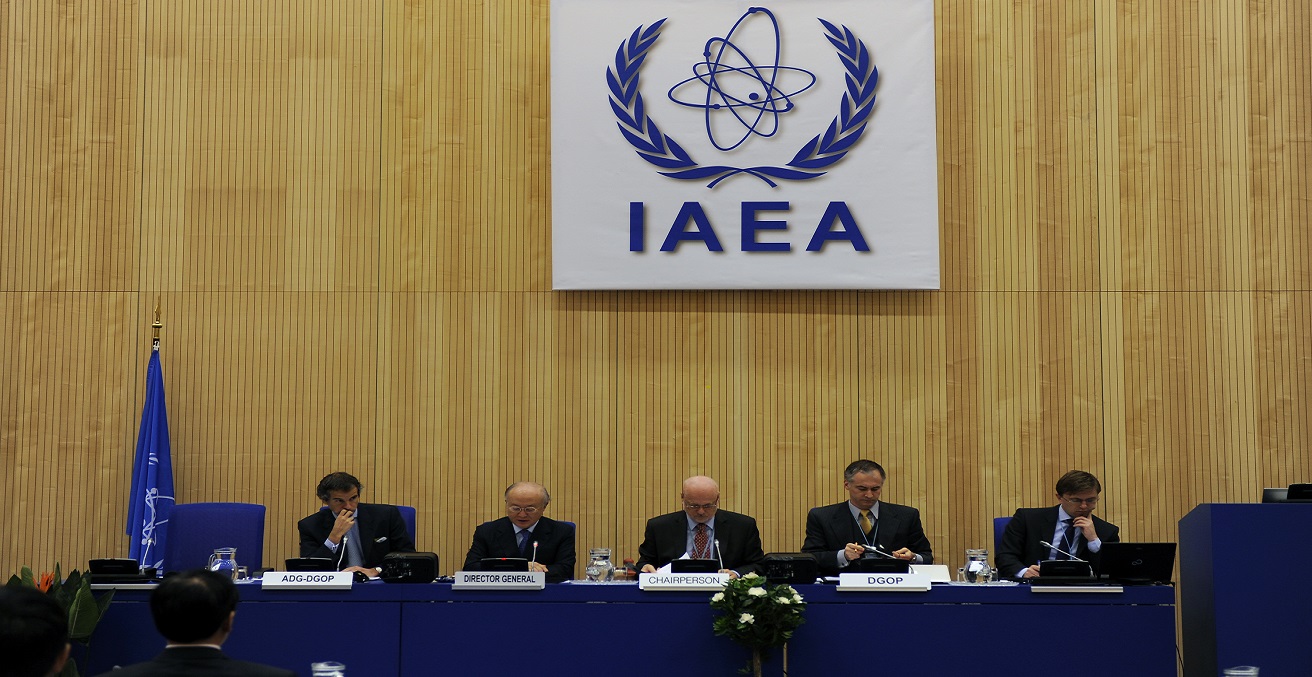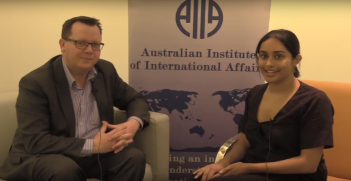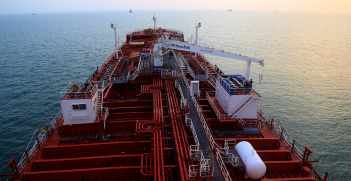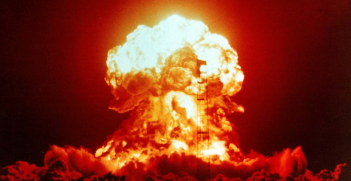North Korea, Iran and the IAEA

Despite the wars of words over Iran and North Korea, the US and the world still needs the UN’s nuclear watchdog to do what it has been doing for 60 years.
While President Donald Trump was in New York threatening to destroy a fellow member of the UN, his Secretary of Energy Rick Perry was conveying a far more measured presidential message in Vienna to the General Conference of the International Atomic Energy Agency (IAEA). For good reason: the US relies heavily on the IAEA to provide global nuclear security services in areas of great sensitivity. Also, the IAEA general conference rarely attracts media headlines.
In the Vienna message, President Trump complimented the IAEA: it had made great strides in promoting the peaceful uses of nuclear energy and developing non-proliferation norms, and served a critical role in monitoring nuclear programs around the world. Perry went on to assure the international community that the US would continue its generous funding, not just its assessed share of the IAEA budget but critical voluntary funding support for onsite safeguards inspections and for the fledgling nuclear security program designed to deny terrorists access to nuclear materials.
Iran: different audience, different line
On Iran, Trump’s message to the IAEA urged its inspectors to exercise their full authority in verifying that Iran was adhering to all its commitments under the Joint Comprehensive Plan of Action, the 2015 deal whereby Iran curbs its nuclear activities in return for easing of sanctions. This is code for pressing the IAEA to release more information about inspection findings and to pursue Iran’s suspected ‘weaponisation’ activity or, in IAEA jargon, the ‘possible military dimensions’ of its nuclear program.
Perry’s message from Trump continued “We will not accept a weakly enforced or inadequately monitored deal”—leaving it ambiguous as to whether he considered the IAEA guilty of either charge, but keeping open the option of using those grounds for walking away from the deal.
At the centre of all this is the IAEA’s Director General Yukiya Amano, who has already served two four-year terms and who was seeking a further term to 2021. Critical to the IAEA’s success as the world’s nuclear watchdog is its reputation for integrity and competence. Keeping the confidence of both Tehran and Washington is near impossible.
Amano has insisted on managing the Iran issue very close to his chest, leading to criticism that he has been withholding information about Iran’s compliance with its commitments. Certainly he has stemmed the flow of informal briefings from the secretariat, making management of the issue that much more coherent.
Just a month ago the US Ambassador to the UN Nikki Haley paid a high-profile call on Amano as part of the US’ review of its Iran policies. Haley promised the IAEA the resources it needed to do its job, but also told the media that the US was concerned about Iran strictly adhering to its obligations. Such public displays of pressure do not help the IAEA.
Does the US have independent evidence of Iranian non-compliance, or was this all for the benefit of Congress to impress how tough the administration was being about what Trump had already declared to be a lousy deal?
In any event, the IAEA finding was that Iran was, by and large, complying with its undertakings. The extension of Amano’s tenure assures the IAEA of a further four years of credible and stable, if highly cautious, leadership.
North Korea: if war is averted the IAEA is ready to return
In 1993, North Korea was found by inspectors to have violated its Nuclear Non-Proliferation Treaty (NPT) obligations by engaging in activities that pointed to a clandestine nuclear weapons program. In 1994, North Korea withdrew its membership of the IAEA; in 2003 it declared its withdrawal from the NPT. Since 2009 there has been no inspection activity in North Korea. While the IAEA referred follow-up action to the UN Security Council, the IAEA’s annual general conference is updated each year on developments in North Korea’s nuclear program and the preparedness of the IAEA to return to North Korea, were circumstances to permit.
The statement by President Trump that Rick Perry delivered to the IAEA General Conference declared that the US continued to consider all options for dealing with North Korea; but rather than threatening North Korea with destruction, it declared optimistically that the US would welcome the IAEA’s return if a path to peace could be found. Remote as that prospect might seem, Amano has announced measures to increase the agency’s readiness to return to North Korea by creating a dedicated team.
The rationale for such a device is that any reapplication of inspections in North Korea will involve dealing with nuclear weapons on an unprecedented scale, even if the first phase is simply a freeze. The IAEA’s only previous experience was verifying the dismantling of South Africa’s much smaller and simpler arsenal in 1994. Any return to North Korea will involve unique disarmament challenges, requiring special weapons expertise and significant extra funding.
Non-proliferation and nuclear disarmament
While the IAEA member states met in Vienna, the treaty on the Prohibition of Nuclear Weapons (TPNW) opened for signing at the UN in New York, attracting some 50 signatures on the very first day. The TPNW has, as opponents predicted, created a division between its advocates and those states that have been closely identified with the disarmament goal but, as beneficiaries of the US nuclear umbrella, have been obliged to oppose the effort to outlaw nuclear weapons.
It should not seriously damage the NPT; there is an overwhelming global interest in the benefits the treaty brings. How damaging it will be to the disarmament cause remains to be seen. At the IAEA General Conference, supporters of the TPNW were at pains to explain why the treaty would strengthen the NPT and the safeguards of the IAEA; others, however, are highly critical of the TPNW for not doing more to entrench strengthened IAEA safeguards as a minimum standard.
In their statements to the General Conference, the nuclear-weapon states and their allies ignored the TPNW. But it is hard to ignore the fact that the nuclear disarmament cause is in disarray. TPNW supporters are convinced they have strengthened the normative barriers to nuclear weapon use but realistically acknowledge the treaty by itself will not see the end of a single nuclear weapon.
On the other hand, TPNW opponents advocate a practical step-by-step approach but the reality is that there is little prospect in the near or medium term of new nuclear disarmament measures: whether bilaterally, between Russia and the US, or multilaterally, where the UN’s disarmament machinery has been moribund for decades.
Vienna will not be where this plays out, but the IAEA will be called on for some of the trickiest multilateral management of international security issues, as it has been for the last 60 years. The IAEA was created with US leadership and a vision of ‘Atoms for Peace’. During the darkest years of the Cold War, the IAEA was one forum where East and West, Washington and Moscow, found common ground: agreement on stopping the spread of nuclear weapons to more countries.
Perhaps, out of the limelight, Vienna could again be the venue for an alliance of the nuclear security community to break current deadlocks, halt further proliferation and revive practical disarmament dialogue. The US and Russia, which have by far the biggest nuclear weapon arsenals, have in the past been willing to show a lead, and need to again. But all nuclear-armed states can and should consider how they can help reverse the current decline into nuclear anarchy.
Who will step up?
John Tilemann is the director of research for the Asia-Pacific Leadership Network on Nuclear Non-Proliferation and Disarmament. He is a former career diplomat and was chief of staff to IAEA directors-general Hans Blix and Mohamed ElBaradei.
This article is published under a Creative Commons Licence and may be republished with attribution.





